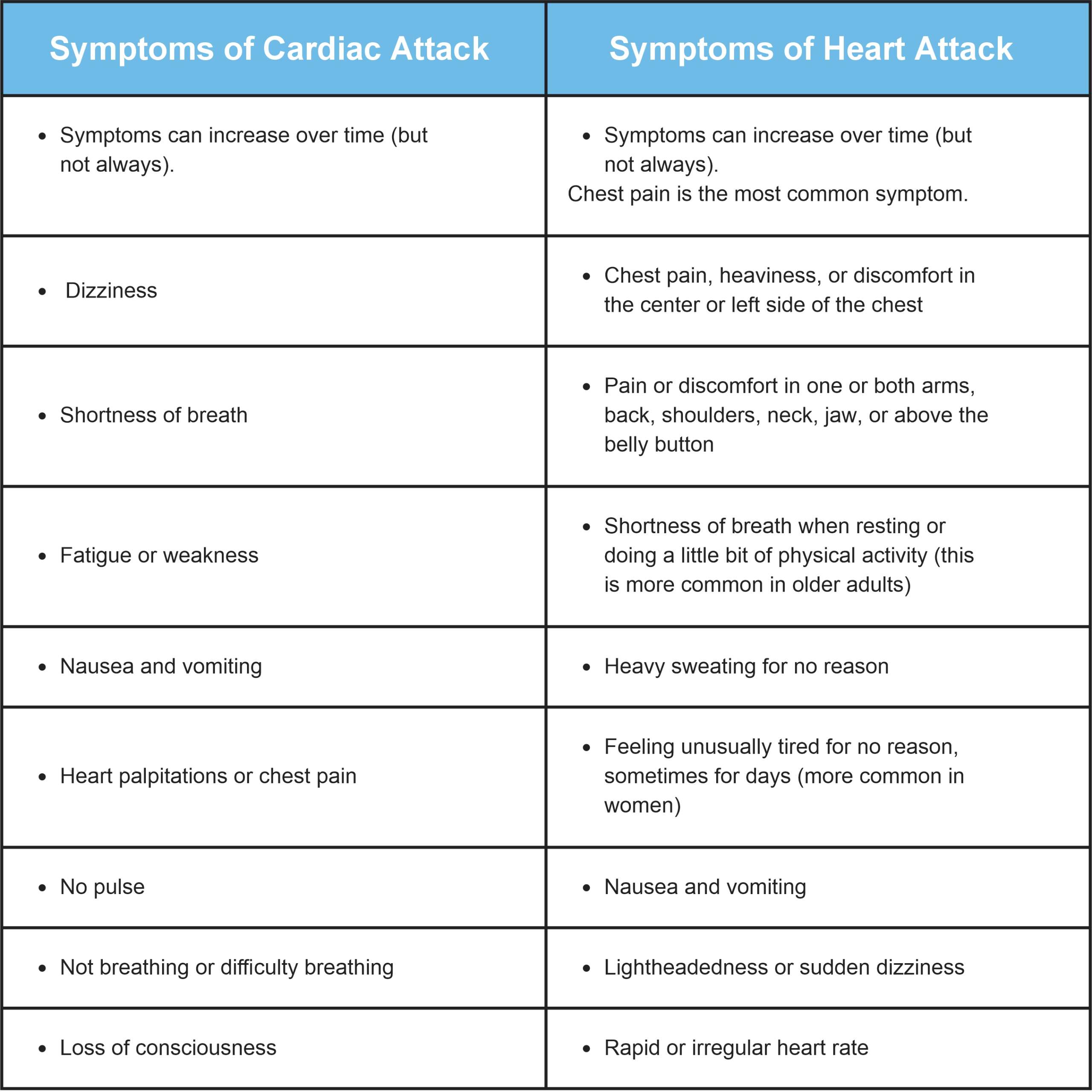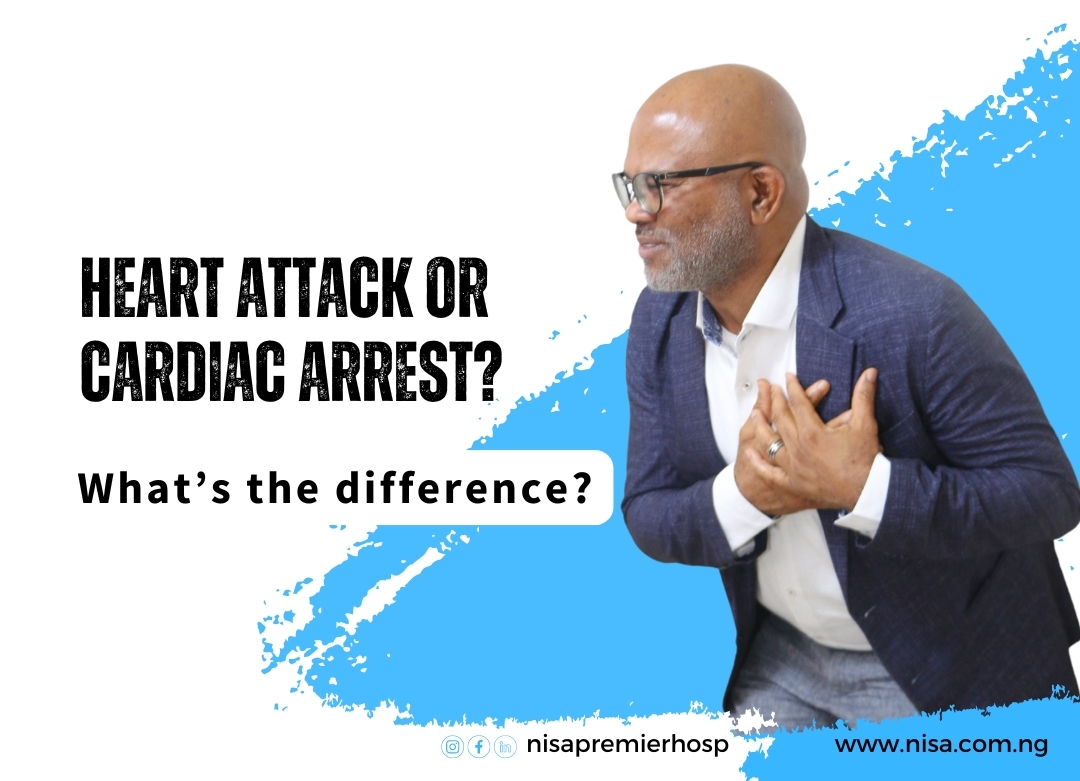Heart attack or Cardiac arrest? What's the difference?
In the realm of cardiovascular health, terms like "cardiac arrest" and "heart attack" are often used interchangeably, leading to confusion about their distinct meanings and implications. In this blog post, we will delve into the fundamental differences between cardiac arrest and heart attack, shedding light on these critical aspects of heart health and emergency care. These medical emergencies have very different causes, symptoms and possible effects. Understanding the difference between cardiac arrest and a heart attack can save your life.
Cardiac Arrest
Cardiac Arrest: A Sudden, Life-Threatening Event
Cardiac arrest occurs when the heart's electrical system malfunctions, causing the heart to suddenly stop beating. This abrupt cessation of cardiac activity leads to an immediate loss of consciousness and cessation of pulse and breathing. Without prompt intervention, cardiac arrest can quickly lead to irreversible brain damage or death.
Key Points about Cardiac Arrest:
Electrical Dysfunction: Cardiac arrest is primarily caused by a malfunction in the heart's electrical system, leading to chaotic rhythms such as ventricular fibrillation or pulseless ventricular tachycardia.
Sudden Onset: Cardiac arrest often occurs suddenly and without warning, making it a life-threatening emergency that requires immediate medical attention.
Symptoms: Symptoms of cardiac arrest include sudden collapse, loss of consciousness, absence of pulse and not breathing or difficulty breathing. In some cases, individuals may experience chest pain, shortness of breath, feel fatigued or weak, vomit, experience heart palpitations or dizziness before the event.
Cardiac arrest may not cause symptoms before it occurs. If you do have symptoms that persist, see a doctor immediately
Treatment
Treatment for cardiac arrest involves immediate initiation of cardiopulmonary resuscitation (CPR) to maintain blood flow and oxygenation to vital organs. Defibrillation, the delivery of an electric shock to the heart, is also crucial in restoring normal heart rhythm.
Your doctor may start you on one or more treatments to reduce the risk of another attack.
- Medications can lower high blood pressure and cholesterol.
- Surgery can repair damaged blood vessels or heart valves. It can also bypass or remove blockages in the arteries.
- Exercise may improve cardiovascular fitness.
- Dietary changes can help you lower cholesterol levels.
Preventing a Cardiac arrest
You can reduce lifestyle factors that may increase your risk of cardiac arrest
Ways to do this include: avoid or quit smoking, eat a heart healthy diet, get regular exercise, limit alcohol intake, periodic medical checks, maintain or achieve a moderate body weight, reduce stress.
Heart Attack: A Blockage in Blood Flow
A heart attack, medically known as a myocardial infarction, occurs when blood flow to your heart muscle is blocked, usually by a clot in one of the coronary arteries. This blockage deprives the heart muscle of oxygen and nutrients, leading to damage or death of the affected tissue.
A heart attack is a medical emergency that occurs when the blood flow to the heart is disrupted or the heart muscle becomes too weak to pump blood effectively. Heart attacks can lead to cardiac arrest, but not always.
Key Points about Heart Attack:
Blockage in Blood Flow: Unlike cardiac arrest, which involves an electrical malfunction, a heart attack is caused by a blockage in one or more of the coronary arteries supplying blood to the heart muscle.
Gradual Onset: A heart attack typically develops gradually, with symptoms such as chest discomfort, shortness of breath, nausea, or lightheadedness manifesting over minutes to hours.
Symptoms: Common symptoms of a heart attack include Chest pain that may feel like pressure, tightness, pain, squeezing or aching, discomfort in the upper body (such as the arms, back, neck, or jaw), shortness of breath, nausea, fatigue, heartburn or indigestion, lightheadedness or sudden dizziness and cold sweats.
Treatment
Treatment for a heart attack focuses on restoring blood flow to the affected area of the heart. This may involve medications to dissolve the clot (thrombolytic), angioplasty and stent placement to open the blocked artery, or bypass surgery in severe cases.
Preventing a heart attack
There are various ways to lower the risk of a heart attack, even after already having one heart attack.
Ways to do this include: avoid or quit smoking, eat a balanced healthful diet, get regular exercise, manage diabetes, high cholesterol levels, high blood pressure, and other conditions, limit alcohol intake, maintain or achieve a moderate body weight, reduce stress, periodic reviews by the heart doctor (cardiologist).
How Heart Attack Can Become Cardiac Arrest
A heart attack usually only leads to cardiac arrest if the damage is severe or blood flow to the heart is completely blocked. By interrupting blood flow to the heart muscle, a heart attack can cause a dangerous cardiac arrhythmia called ventricular fibrillation, which causes the heart to stop immediately.
The table below lists common symptoms for heart attacks and cardiac arrests.

Conclusion: Clarifying the Distinctions
In summary, while both cardiac arrest and heart attack are serious cardiac events, they differ in their underlying mechanisms, onset, symptoms, and treatments. Understanding these distinctions is crucial for prompt recognition and appropriate management in emergency situations.




